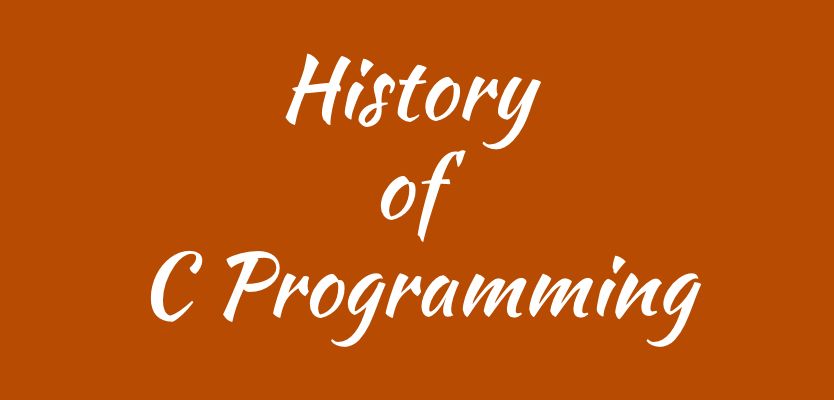HISTORY OF C
C was invented primarily by Brain Kernighan and Dennis Ritchie working at AT&T Bell Labs in the United States. In 1983 the American National Standards Institute began the Standardisation process. In 1989 the International Standards Organization continued the standardisation process. In 1990 a standard was finalized, known simply as “Standard C”. Everything Before this known as “K&R C”.
Standardisation :
C turned out to be very popular and by the early 1980s hundreds of implementations were begin used by a rapidly growing community of programmers. It was time to standardize the language.
ANSI:
In America, the responsibility for standardizing languages is that of the American National Standards Institute or ANSI. The name of the ANSI authorizedcommitte that developed the standard for c was X3j11. The language is now defined by ANSI Standard X3.159-1989.
ISO:
In the International arena, the International Standards Organization, or ISO, is responsible for standardizing computer language. ISO formed the technical committee JTC1/SC22/WG14to review the work of X3J11. Currently the ISO standard for c, ISO 9889:1990, is essentially identical to X3.159. The Standards differ only in format and in the numbering of the sections.
The ISo C Standard is thus the final authority on what constitutes the C programming language. It is referred to from this Point on as Just “The Standard”. What went before, i.e. C as defined by Brian Kernighan and Dennis Ritchie is known as “K &R C”
|
2 3 4 5 6 7 8 |
#include<stdio.h> void main() { printf("\nFirst Program In C"); } |
#include:
The #include directive instructs the C Preprocessor (a non intractive editor which will be discussed later) to find the text file “stdio.h”. The name itself means “Standard input and output” and the “.h” means it is a header file.
main:
The main function is most important. This defines the point at which your program execution will start.
void:
void represents that function doesn’t return any value.
\n:
\n is new line character (change line).

Pradeep Maurya is the Professional Web Developer & Designer and the Founder of “Tutorials website”. He lives in Delhi and loves to be a self-dependent person. As an owner, he is trying his best to improve this platform day by day. His passion, dedication and quick decision making ability to stand apart from others. He’s an avid blogger and writes on the publications like Dzone, e27.co




